Two months before the Tokyo 2020 Olympics, Simone Biles—the reigning women’s gymnastics all-around champion—made history by becoming the first woman to successfully perform a Yurchenko double pike in competition. A move “considered so perilous and challenging that no other woman has attempted it in competition,” per the New York Times, the skill found the 24-year-old launching herself toward a stationary vaulting horse at speeds of up to 15 miles per hour and flipping her body through the air a full two-and-a-half times.
Landing this vault is far from the only example of Biles making gymnastics history. Widely considered the greatest female gymnast of all time, the athlete was the first to perform at least four exceptionally difficult skills in competition, including a triple-double on floor and a double-double dismount on beam. She’s also the most decorated gymnast, male or female, in World Championship history. (Soviet gymnast Larisa Latynina holds the Olympic record, with 14 individual medals and 4 team ones; Biles currently has 5.)
(Read Dominique Dawes’ guide to watching gymnastics at the Olympics here.)
Biles’ ongoing efforts to redefine the already gravity-defying sport represent the latest chapter in gymnastics’ 2,000-plus years of history. The sport’s most popular discipline—artistic gymnastics—made its Olympic debut in 1896, at the first modern Games. Today, women artistic gymnasts compete for individual and team all-around titles in four events (vault, uneven bars, beam and floor), while male gymnasts compete in six events (floor, pommel horse, rings, vault, parallel bars and horizontal bar).
From classical civilization to Olga Korbut to Tokyo 2020, here’s what you need to know about gymnastics’ evolution over the past two millennia.
Early history
/https://tf-cmsv2-smithsonianmag-media.s3.amazonaws.com/filer/b1/69/b1696a5d-0e93-4124-9761-b45a5449d2b3/bull_leaping_minoan_fresco_archmus_heraklion.jpeg)
The sport traces its roots to ancient Greece, where men performed physical exercises in spaces known, fittingly enough, as gymnasiums. The name of the sport itself is derived from the Greek word gymnazein, meaning “to exercise naked.” As alluded to by this definition, most activities, including running, tumbling floor exercises, weight lifting and swimming, were undertaken while unclothed.
The ancient Greeks practiced gymnastics as part of a slate of activities designed to promote physical and mental health. As surgeon and educator David William Cheever wrote for the Atlantic in 1859, “The Athenians wisely held that there could be no health of the mind, unless the body were cared for—and viewed exercise also as a powerful remedial agent in disease.” Different Greek city-states had varying reasons for embracing the sport: In Cheever’s words, the “hardy Spartans, who valued most the qualities of bravery, endurance and self-denial, used the gymnasia only as schools of training for the more sanguinary contests of war.”
Many of the exercises once categorized as gymnastics are now viewed as distinct sports. Some of these events, like boxing, wrestling and racing, appeared in the ancient Olympic Games prior to their discontinuation in 393 C.E.
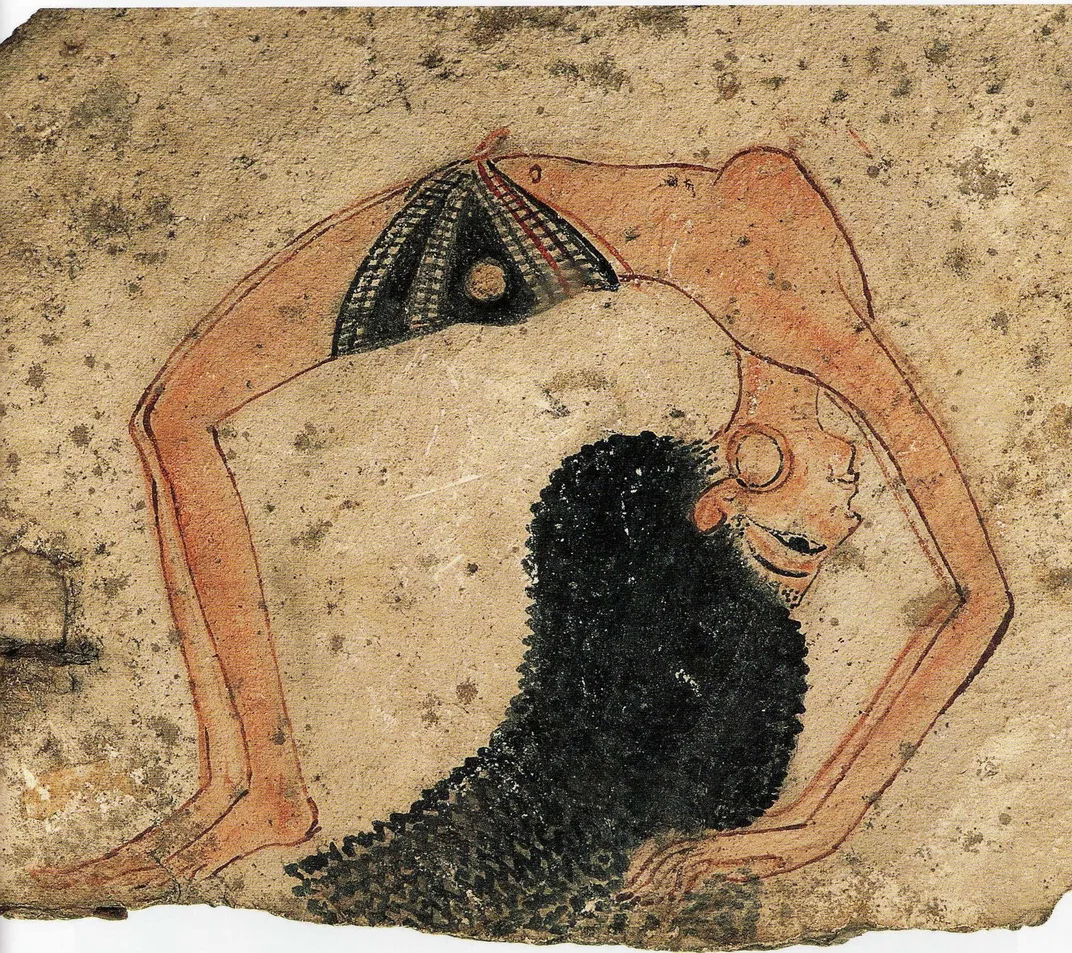
Following the decline of Greek civilization and the rise of the Romans, gymnastics evolved “into a more formal sport.” As seen in Sparta, the Romans viewed athletic activity as a means to a martial end. Per Cheever, “The soldier of the early Republic was hence taught gymnastics only as a means of increasing his efficiency.”
Artistic records of athletic feats reminiscent of what’s classified as gymnastics today appear across the ancient world. A famed, 15th-century B.C.E. fresco found at the palace of Knossos in Crete, for instance, depicts three individuals leaping over a charging bull in a manner reminiscent of modern vaulting. In Egypt, an array of hieroglyphics show people performing backbends and similarly acrobatic feats, while in China, Han dynasty engravings feature performers practicing juedixi, a predecessor of gymnastics that incorporated elements of dance, wrestling and tumbling.
Gymnastics fell into relative obscurity after antiquity, with early medieval Europeans shunning extracurricular physical activity in part due to “the strongly ascetic sentiment of early Christianity,” notes Medievalists.net. Financial constraints and shifting cultural tastes also played a role in the sport’s decline, though traveling troupes of thespians, dancers, acrobats and jugglers continued to practice tumbling and gymnastics-adjacent skills throughout the medieval period.
An enlightened national pastime
Modern gymnastics first emerged during the Enlightenment, when Europe experienced “a shift toward [re]emphasizing physical education and mental education,” says Georgia Cervin, a New Zealand–based sports scholar and the author of Degrees of Difficulty: How Women's Gymnastics Rose to Prominence and Fell from Grace. Many 19th-century gymnastics regimens had nationalist overtones, with the activity falling under a broader “education program for citizens geared [at] having a population that was both healthy and able to serve the country and the military,” Cervin adds.
The so-called grandfather of gymnastics, German educator Johann Christoph Friedrich GutsMuth, published the first written guide to the sport in 1793. Titled Gymnastic fuer die Jugend, or Gymnastics for Youth, the text outlined two forms of gymnastics: natural, or utilitarian, and artificial, or nonutilitarian. The former prioritized physical health, while the latter placed a higher value on skills’ aesthetic, much like artistic gymnastics today.
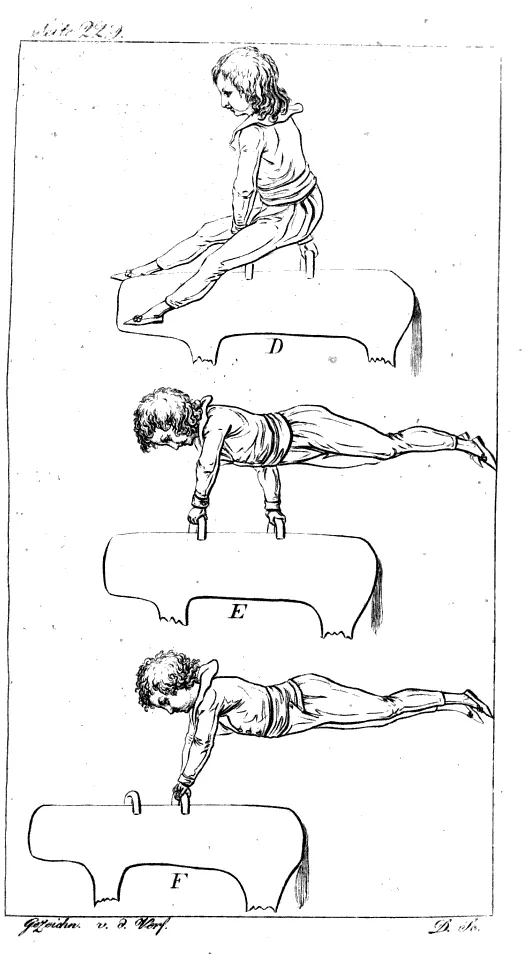
In a revised 1804 edition of Gymnastics for Youth, GutsMuths lauded physical education as a way to “fully develop the aptitude of the physical individual and attain the body’s potential beauty and perfect usefulness.” The educator also alluded to gymnastics’ origins in ancient Greece, adding, “Our gymnastics adheres closely to the culture of the intellect; walks harmoniously hand in hand with it and thereby ideally resembles the pedagogical skills that were practiced by the young men in the Academy of Athens.”
If GutsMuths was the grandfather of gymnastics, then Prussian educator and former soldier Friedrich Ludwig Jahn was undoubtedly its father. Prompted to develop a program of physical education after witnessing his home country’s defeat at the hands of Napoleon, Jahn embraced gymnastics as a means of boosting morale and inspiring patriotism. Jahn viewed fresh-air expeditions, gymnastics and calisthenics as ways of building “national character” and inspiring “a love for the Fatherland the purity of the Volk,” or people. His training regimen bordered on militaristic and directly influenced the Hitler Youth movement of the following century.
His first open-air gymnasium, the Turnplatz in Berlin, debuted in 1811, quickly gaining traction among young, middle-class students who responded to his emphasis on “[n]ationalistic pride and national restoration.”
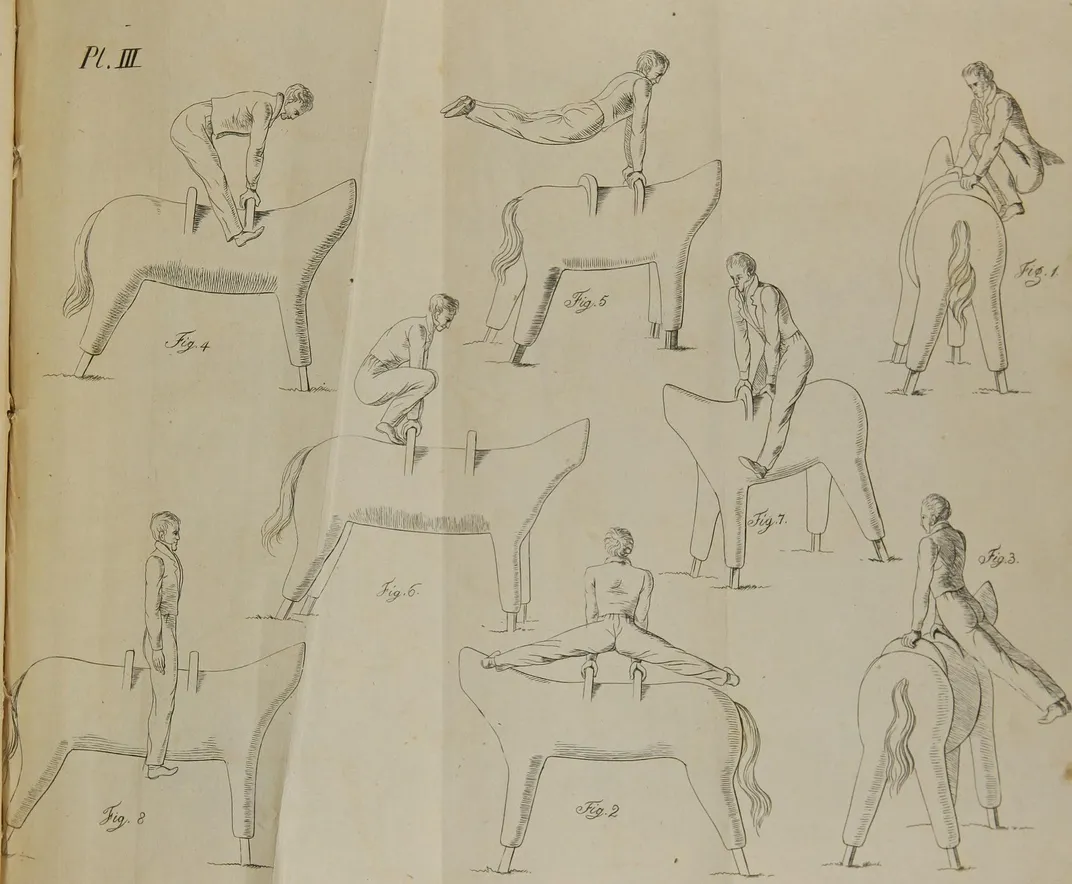
The Turnverein movement sparked by Jahn derived its name from the German words turen (“to practice gymnastics”) and Verein (“club, union”). Adherents known as Turners practiced their skills on apparatuses much like those used today, including the pommel horse, parallel bars, balance beam and horizontal bar.
Turner clubs’ distinct nationalist bent soon attracted the attention of more conservative forces, who objected to Jahn’s promotion of a Prussia free of French influence. Anti-nationalist sentiment proved so strong that in 1819, Prussian king Frederick William III actually banned the sport and placed Jahn under house arrest. Turners were only able to practice gymnastics in Prussia again in 1842, when Frederick William IV lifted the ban.
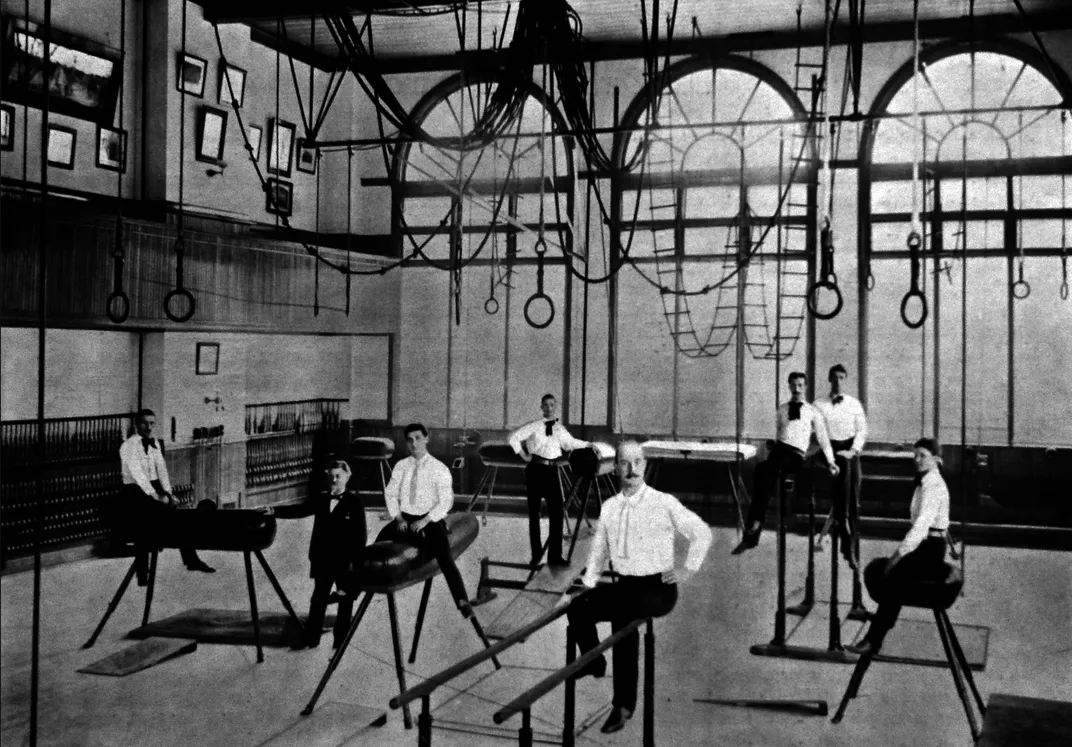
The Sokol—another movement inspired by the Turnverein—took shape in nearby Prague during the early 1860s. (Alternatives to these dominant forms, including a rhythmic-centric movement in Sweden, also cropped up across Europe.) According to Britannica, the Sokol “traditionally emphasized mass calisthenics as a means of promoting communal spirit and physical fitness,” using gymnastics and other exercises to “develop strength, litheness, alertness and courage.” Like the Turnverein, the Sokol movement attracted backlash from those eager to tamp down nationalism: Nazi occupiers banned the gymnastics society during World War II, and though the movement was revived in 1945, the region’s communist leaders banned it once again in 1948.
European immigrants brought gymnastics to the United States in the mid-19th century, establishing offshoots of Turnverein and Sokol clubs in their new country. An American pioneer of the sport was Dudley Allen Sargent, a doctor and educator who taught gymnastics at several U.S. universities between the 1860s and 1910s, in addition to inventing more than 30 different apparatuses for the sport.
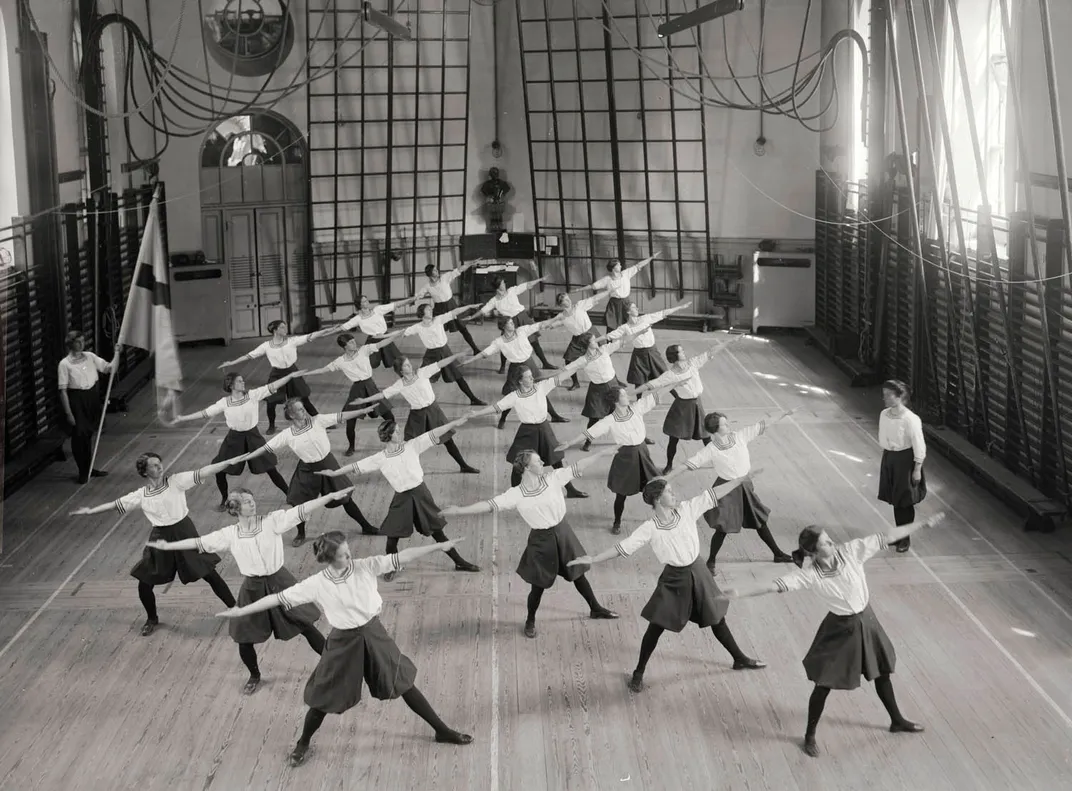
Making the Olympics
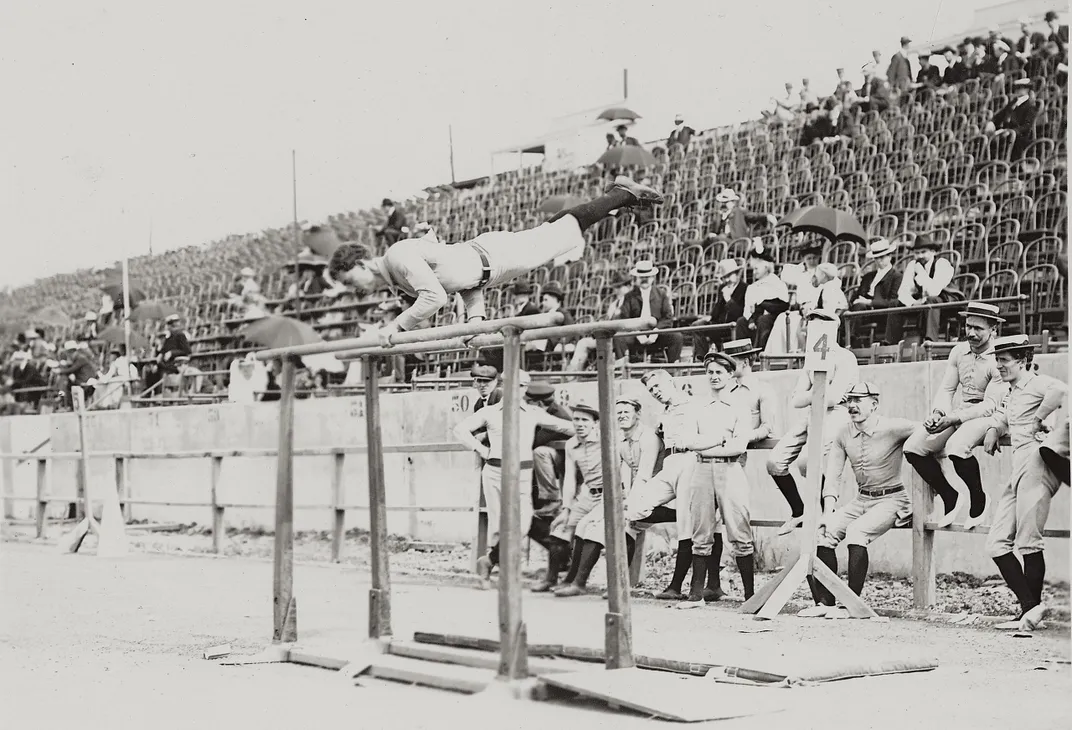
The Bureau of the European Gymnastics Federation—a predecessor to today’s International Gymnastics Federation (FIG)—was established in 1881 as a global governing body for the sport. Fifteen years later, at the first modern Olympic Games, male gymnasts competed in six individual events (horizontal and parallel bars, pommel horse, rings, rope climbing and vault) and two team ones. Germany dominated the field, claiming five gold medals, three silvers and two bronzes.
Prior to 1928, Olympic gymnastics, like its precursor in ancient Greece, was defined rather broadly. In 1900, male gymnasts competed in events more closely associated with track and field today, from pole vaulting to long jumping. Standardization of the sport began with the 1928 Games, though specific events, including floor exercise, were only introduced later. (Interestingly, track and field continued to appear at the World Gymnastics Championships until 1954.)
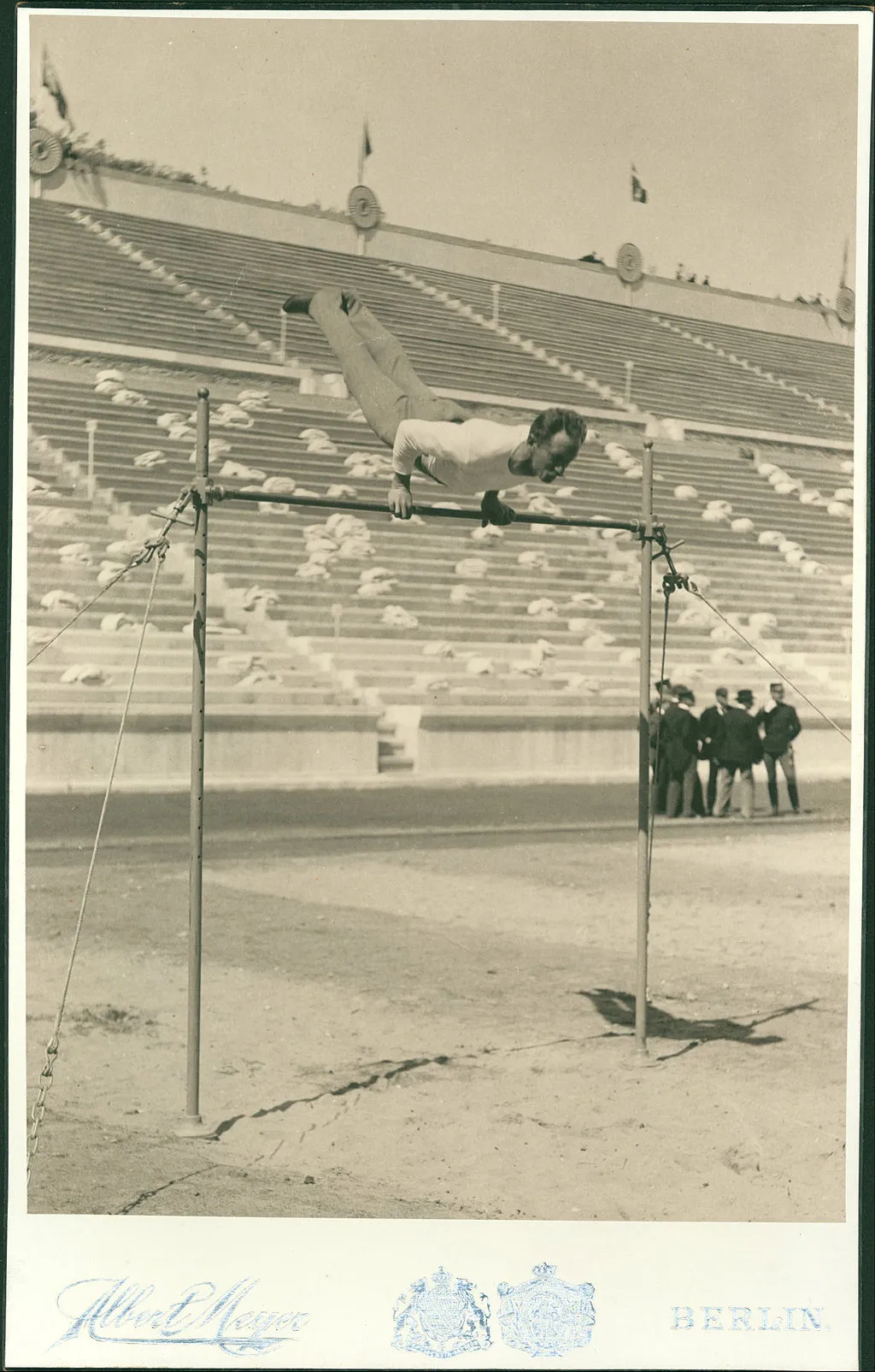
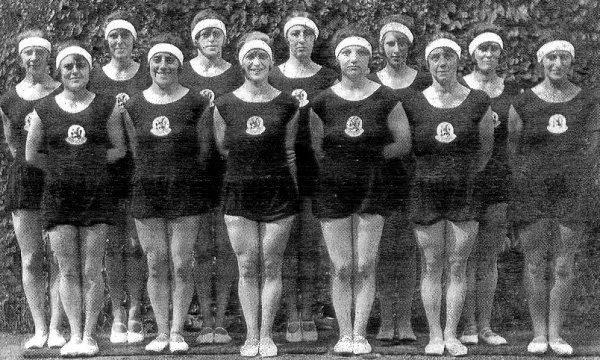
Women gymnasts participated in demonstration exercises at the Olympics as early as 1906, when the Intercalated Games were held, but were barred from actually competing until the 1928 Olympics. (The FIG, for its part, introduced the men’s World Championships in 1903 and the women’s in 1934.) “No one wanted them to compete, because competition was seen as quite aggressive” and masculine, says Cervin. Jane Rogers, an associate curator at the Smithsonian’s National Museum of American History (NMAH), points out that sports were considered too “strenuous” for women at the time, as men were convinced that their wives’ “reproductive health would just go down the drain if they exercised.”
To allay these (unfounded) concerns, the FIG designed women’s gymnastics “in a way that would showcase femininity” and demonstrate that participating in sports was not just safe for women’s health, but could also be beneficial, says Cervin. “What they’re going to reward [with high scores] align with traditional female values,” she adds: “soft, passive movements” showcasing flexibility, beauty and grace.
A Cold War competition
In the first half of the 20th century, gymnastics proved most popular in continental Europe, where the sport’s modern resurgence had taken place. Though gymnastics experienced a decline in popularity around the mid-1900s, interest soared during the Cold War, when the Olympics emerged as a cultural battleground for nations on both sides of the Iron Curtain.
“The Olympics were seen as a place where the Cold War could be contested,” Cervin explains. “It was a place where, in all sports, the ideologies of communism and capitalism were represented. Winning at a sport was effectively billed as being superior, proving the superiority of that country, from ideology to values.”
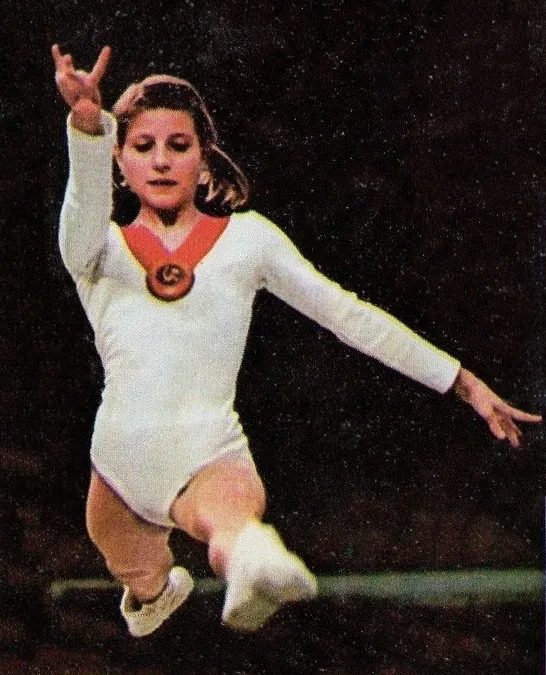
Eastern European athletes established their dominance in the discipline by the 1950s, inspiring Western countries like the U.S. to dedicate more resources to their respective gymnastics programs. The United States Gymnastics Federation—now known as U.S.A. Gymnastics—was formed in 1963 as the American sport’s governing body. Cathy Rigby, a gymnast who later found fame playing Peter Pan in an array of theater and film productions, won the U.S.’ first international title at the 1970 World Championships in Yugoslavia, earning a silver medal on the balance beam.
Soviet gymnast Olga Korbut was arguably the sport’s first global superstar. At the 1972 Munich Games, the diminutive 17-year-old “captured the public imagination with her charismatic and daring performances,” per her official Olympics biography. She was the first woman to perform a backward somersault on the beam in an international competition and received the then-unprecedented score of 9.8 out of 10 for successfully executing a backflip on the uneven bars. (The move, known as the Korbut Flip, is now considered so dangerous that Olympic gymnasts are forbidden from even attempting it.)
“It was amazing,” Korbut later recalled. “One day, I was a nobody, and the next day, I was a star.”
Writing for the Guardian in 2012, journalist Paul Doyle noted that “Korbut broke sporting boundaries by doing something considered unfeasible, almost freakish.” He added, “[W]hat intensified her popularity was that, in another sense, she subverted systems by being utterly normal. Her displays of emotion during competition—her girlish smiles after successful performances, her tears of distress after botched ones, and her warm, natural connection with crowds—exploded the myth fostered by Cold War propaganda that Soviets were a callous, mechanical bunch.”
Korbut returned to represent the Soviet Union at the 1976 Summer Olympics in Montreal but was eclipsed by 14-year-old Nadia Comăneci of Romania, who earned the first perfect 10 in gymnastics Olympic history for her flawless uneven bars routine. Only programmed to display three digits, the scoreboard flashed a 1.00 score, momentarily baffling observers.
“I looked around to see what was going on and then I saw the problem or whatever was happening with the scoreboard,” Comăneci said later. “I didn’t understand it but I was like, whatever it is, it’s something wrong so I am just going to concentrate on my next event.”
American ascendancy
Korbut and Comăneci’s much-publicized, televised performances pushed countries with less established gymnastics programs, like China and the U.S., to up the ante. In 1984, at an Olympics boycotted by the dominant Soviet team, the U.S. men’s team won the country its first gold medal in the all-around; that same year, Mary Lou Retton, a 16-year-old from West Virginia who’d grown up emulating Comăneci, won the individual all-around title, becoming the first U.S. woman to capture an individual medal of any color.
The U.S.’ path to gymnastics ascendancy continued in 1996, when a group popularly dubbed the Magnificent Seven won the country’s first women’s all-around title. Among the Games’ breakout stars were 18-year-old Keri Strug, who secured the team’s first-place finish by vaulting on an injured ankle, and 19-year-old Dominique Dawes, who became the first African American woman to win an individual Olympic medal in gymnastics.
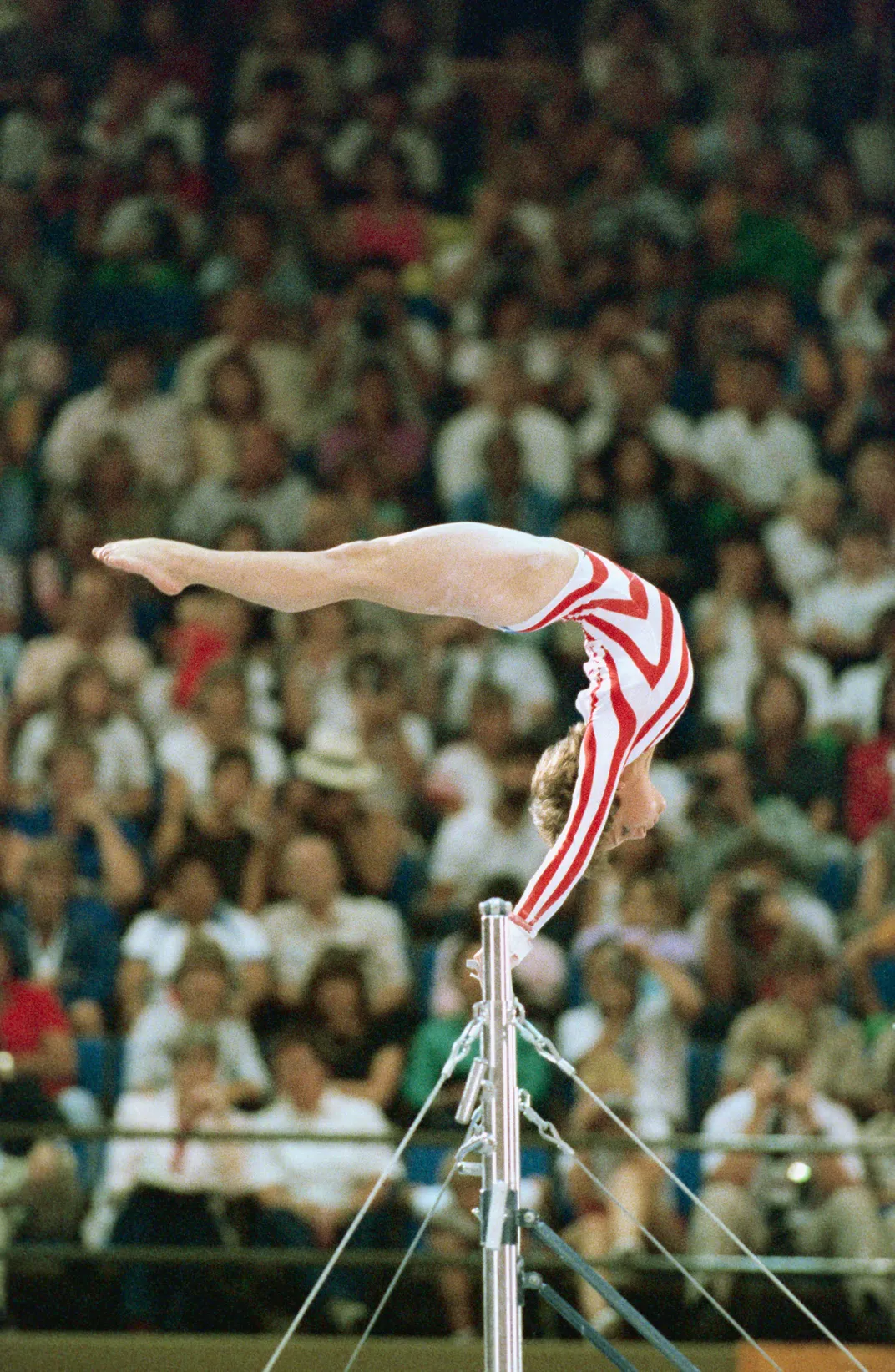
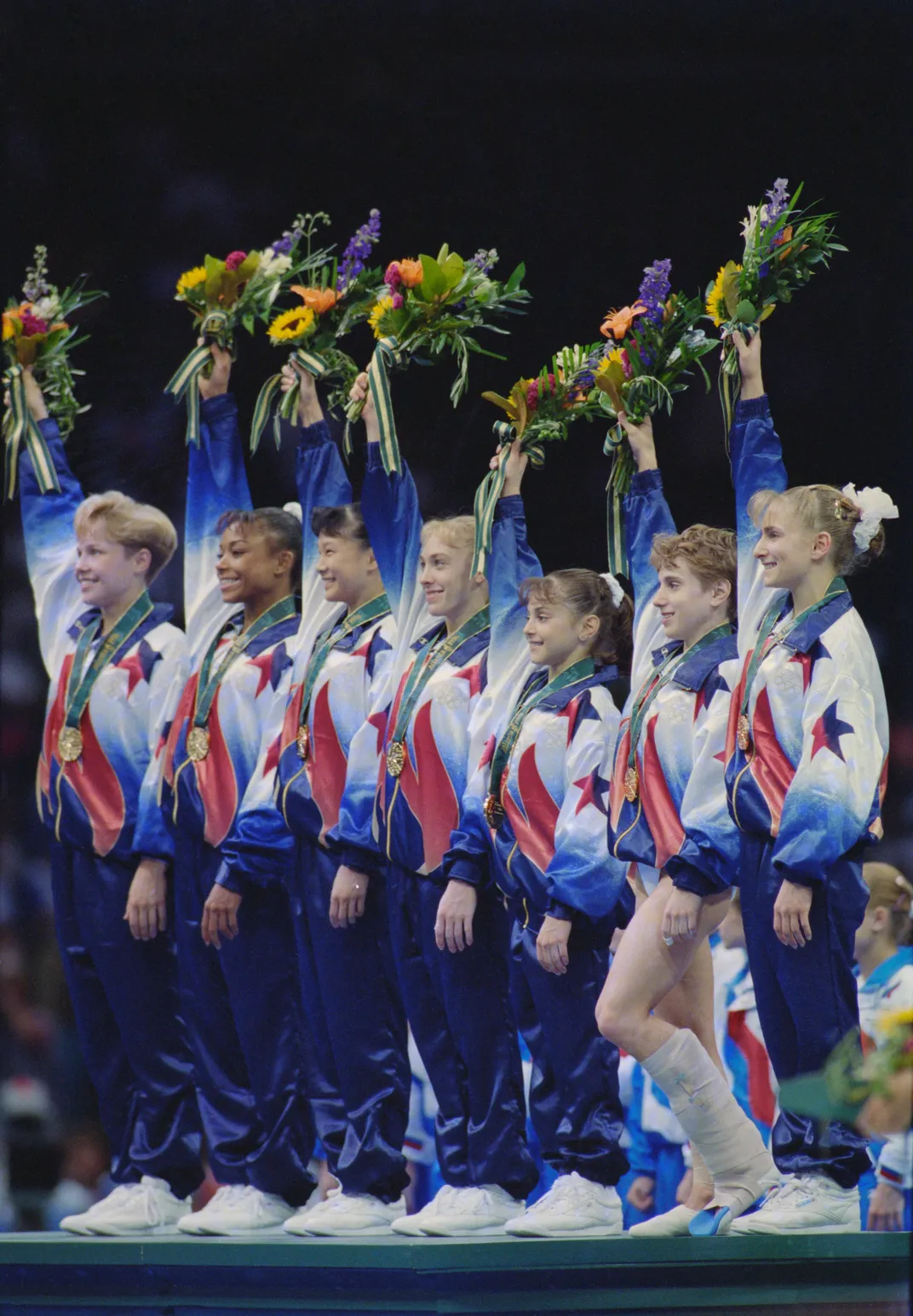
As Rogers notes, the 1996 Atlanta team was among the first to benefit from Title IX, which upon its enactment in 1972 “really opened up doors” for young female athletes by ensuring they had equal access to public school sports. The U.S. contingent continued to break ground in the new millennium: In 2004, 16-year-old Carly Patterson became the first American woman to win the individual all-around gold medal in a non-boycotted Olympics. In every Summer Olympics since, a U.S. gymnast—Nastia Liukin, Gabby Douglas and Biles in 2008, 2012 and 2016, respectively—has claimed that same top title.
This year, as the world’s gymnasts prepare to take the stage in the long-delayed Tokyo Games, Biles is expected to not only repeat, but build on, the success she found in Rio in 2016.
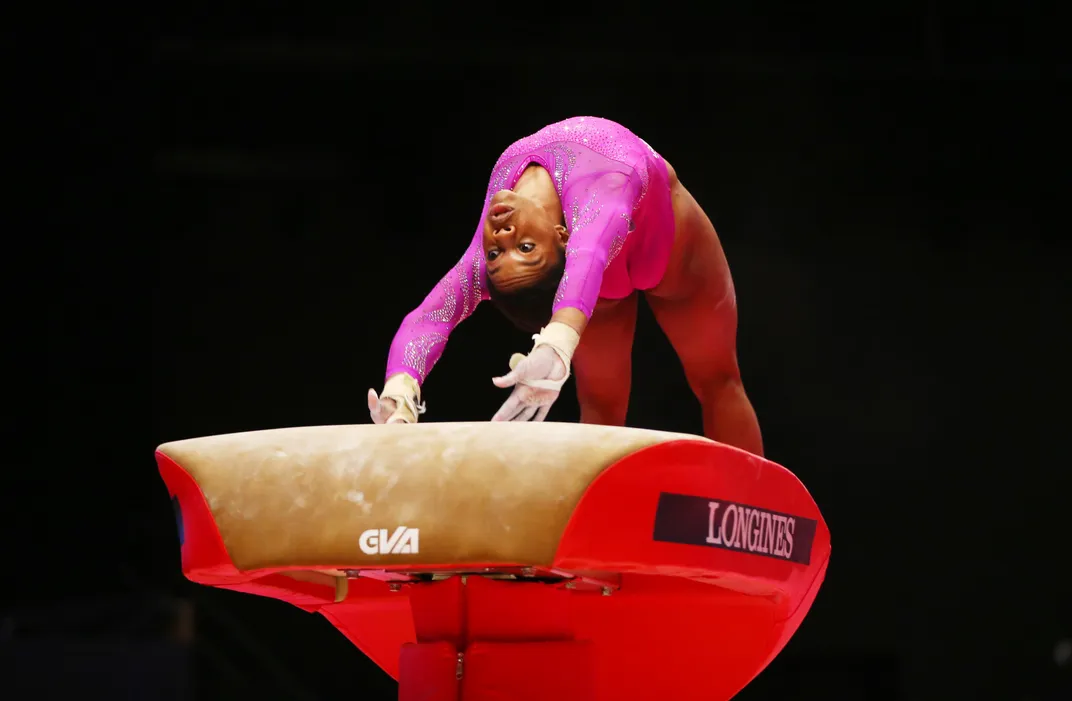
The future of gymnastics
In recent years, gymnastics has undergone a reckoning, with athletes pushing back against a deeply entrenched culture of abuse. (Larry Nassar, the former U.S.A. Gymnastics national team doctor who sexually abused hundreds of his young patients, is currently serving a 60-year prison sentence.) The stereotypical view that all gymnasts must be young and petite is being challenged by competitors like 33-year-old Chellsie Memmel and 46-year-old Oksana Chusovitina. And, contrary to the sexist underpinnings of gymnastics’ emphasis on femininity, Biles has clearly established herself as an athlete who prizes strength and sheer power over more passive, soft movements.
Much more work remains to be done, says Cervin, who is a former international gymnast herself. Rather than separating the sport into men’s and women’s events, she suggests allowing individuals to compete on any apparatus they see fit—a move that would make the sport more gender-inclusive, too. Raising the minimum age for Olympic gymnasts from 16 to 18 could also help curb the sport’s normalization of abuse, Cervin argues.
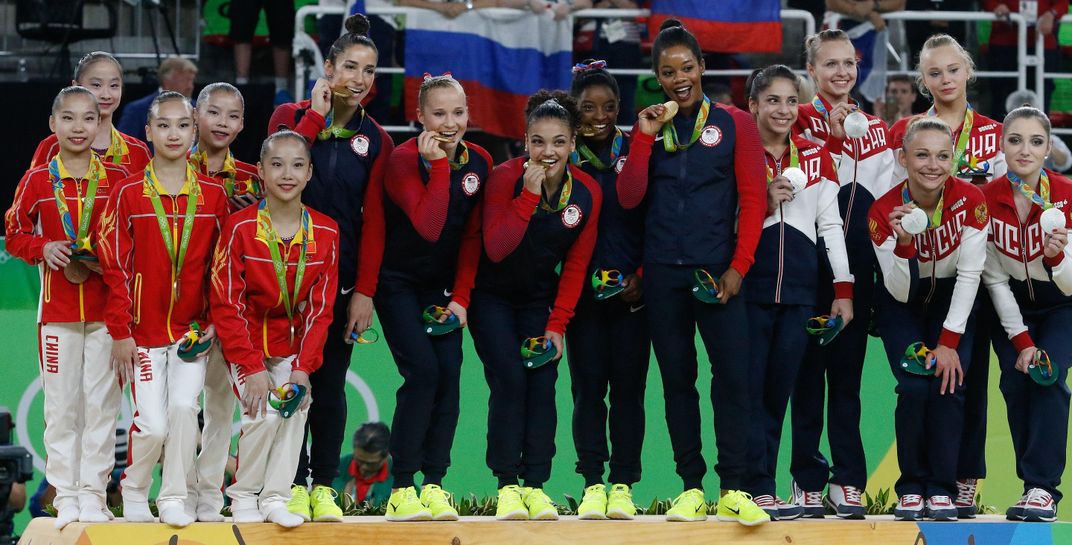
Reflecting on the Olympics more broadly, Rogers emphasizes that the Games are one of the only places where “a woman athlete can really showcase what she can do.” Though women’s sports leagues exist, they receive far less media coverage and investment than men’s.
As for the enduring popularity of gymnastics, and in particular women’s gymnastics, in the U.S., Rogers concludes, “It’s always good when your team, when your country is winning.”
/https://tf-cmsv2-smithsonianmag-media.s3.amazonaws.com/filer/da/20/da202989-cae7-45a4-8f1c-7122a6aa7090/mobile_gymnastics.jpg)
:focal(990x352:991x353)/https://tf-cmsv2-smithsonianmag-media.s3.amazonaws.com/filer/88/74/88745f93-7928-40e8-9df5-397d82cdab76/gymnasticsfdofsdaf.png)
/https://tf-cmsv2-smithsonianmag-media.s3.amazonaws.com/accounts/headshot/mellon.png)




/https://tf-cmsv2-smithsonianmag-media.s3.amazonaws.com/accounts/headshot/mellon.png)